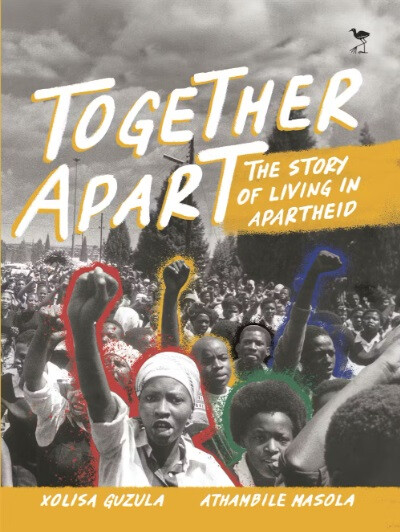
JOHANNESBURG, South Africa – A new book, "Together Apart: The Story of Living in Apartheid," aims to educate young readers and people of all ages about the harsh realities of South Africa's segregated past. Authors Xolisa Guzula, a literacies scholar, and Athambile Masola, a historian, have created a visually engaging work filled with graphics, illustrations, and comic-style information to make this crucial history accessible.
Apartheid, an Afrikaans word meaning "setting apart," was a system of laws implemented by the white-minority government, officially beginning in 1948. This system divided South Africa into four racial groups: white, Indian, colored, and African, enforcing strict segregation based on the belief in white racial superiority.
"Apartheid entrenched a system of racism that was based on the idea that white people were the superior race. People who were 'non-white' were inferior and didn't deserve the same rights," Guzula explained. This system, rooted in colonialism, involved the violent seizure of land and resources by Europeans.
The book details how apartheid created "Bantustans" or homelands for African people, separate living spaces in cities, and segregated facilities, including schools, sports venues, and public areas. It even included laws against interracial relationships.
"Together Apart" highlights personal stories to convey the impact of apartheid on everyday lives. Through the voice of a grandmother, Makhulu, the book shares experiences of limited career choices, pass laws restricting movement, and the alienation of mixed-race families. It also touches on the struggles of athletes barred from interracial competition.
The authors chose a narrative approach to make history relatable. "By paying attention to personal stories we can see that history is not boring if it is in the everyday," Masola said. "Personal stories are also passed on from generation to generation. This means history is about who we are as people rather than facts to remember from a textbook."
To reach a diverse audience, the book employs various sources, including poetry, pictures, and comic strips, encouraging discussion and visual literacy. The authors also use varying text lengths to cater to different reading stamina.
The importance of educating young people about apartheid is underscored by the book's message: "While apartheid laws are over, the effects of apartheid are still with us." The authors emphasize the need to remember history to prevent repeating past mistakes, particularly in light of rising global fascism.
Recent incidents, such as a racially charged prank at a Cape Town high school, demonstrate the ongoing relevance of this history. "These young people need to better understand history so that they don’t make jokes about a painful past," Guzula stated.
The book also connects past struggles to present-day movements like #RhodesMustFall and #FeesMustFall, illustrating the enduring legacy of apartheid.
Despite the painful nature of the subject, the authors aim to highlight resilience and hope. "People still sang and made art and played sport despite the tragedy of apartheid," Masola noted. "Survival is also about remaking the world through creativity."
"Together Apart" serves as a vital educational tool, prompting intergenerational conversations and fostering a deeper understanding of South Africa's history and its continuing impact.
[Copyright (c) Global Economic Times. All Rights Reserved.]



























